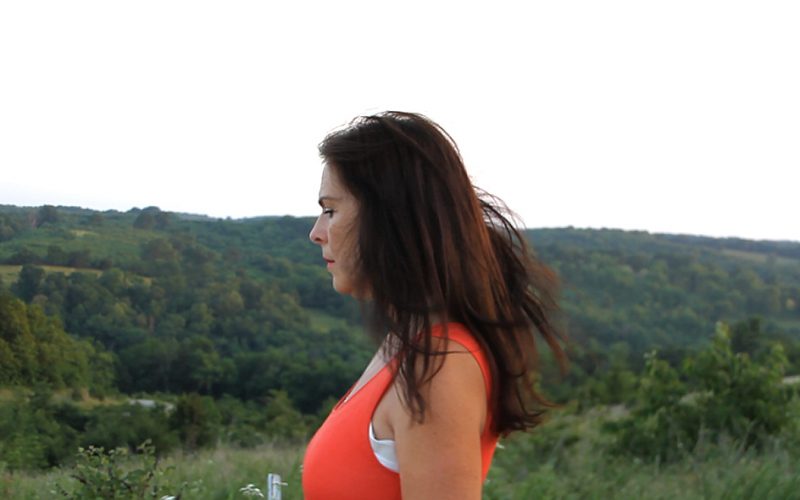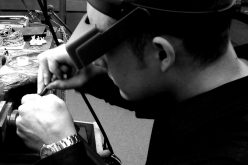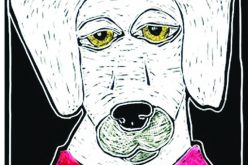By Terrah Baker
Heard of a movie called Mud (2012)? Well, how about leading actor in the film Matthew McConaughey? Now that we’ve caught your attention, did you know that it was filmed in over four locations throughout Arkansas?
Arkansas has been a film industry hot spot in the past for its cheaper labor force, locations, and statewide industry leaders that brag a “team approach to production,” able to provide “producers with seamless, single contact access to everything and everyone the state has to offer,” According to the Arkansas Production Alliance (APA) website. Because of the APA’s advocacy, and the talented film makers that call Arkansas home, the large and indendent film industry in Arkansas has been taking off, and impressing critics.
APA is a collaboration of state and private organizations, led by Arkansas Film Commissioner Chris Crane, who know the financial benefits of bringing a billion dollar industry to Arkansas. And they’re doing a good job of it. Their website, arkansasproduction.com, boasts locations, contacts, incentives and standards for filming in the state. In 2009, the Arkansas legislature even enacted the Digital Product and Motion Picture Industry Development Act that offers qualifying projects a 20 percent rebate of certain costs, and a 10 percent rebate of bottom-line employees who are full-time residents. While this legislation is geared more towards larger productions, costing $200,000 or more within a 6-month period, it helps bring work for film makers and residence who are already here.
Along with the Hollywood movie Mud and others filmed in Arkansas, like Slingblade (1996) and A Face in the Crowd (1956), the two following films, Come Morning (2012) and documentary No Trespassing (2012) look deep into the heart of Southern culture. While No Trespassing was filmed in Southern Missouri, the themes address Ozark culture that extends into Arkansas. The films have received rave reviews over the last year at festivals in the state and elsewhere, and are great examples of the quality work local film makers are producing.
The Free Weekly was lucky to take a peek and talk with the makers, and we think you will be extremely entertained and educated by these two noteworthy films.
Check out more Arkansas-connected-or-made films:
- A Lens to the Soul: the Photography of Andrew Kilgore
- Up Among the Hills (The Story of Fayetteville)
- The Night the Blackbirds Fell
- Marvin and Me
- 45RPM
- Buck Wild

Derrick Sims directing two of the main characters of Come Morning in Southern Arkansas where the story took place and was filmed.
Southern Themes Hit Hard (And Kill) In Arkansas-Made Drama
When Rogers resident Derrick Sims screened his film Come Morning (2012) in Los Angeles where he’s been working in the film industry for several years, many of the comments he got were disbelief in the story line. “Why would people fight over such a small piece of land,” they wondered. Screening the film throughout the South, he never gets those questions.
“Come Morning is a Southern movie. They can connect with it more,” Sims said.
That’s because the movie centers around themes that Southerners know best — land disputes and the chaos that can come following a horrific hunting accident. One early morning a grandfather (Michael Ray Davis) and his grandson (Thor Wahlestedt) set out on a hunting trip. When they find out the deer they thought they shot is actually a trespassing neighbor, the grandfather realizes he has no choice but to hide the body deep in the woods. That’s because for years the two men have been entangled in land disputes, and living in a small town, everyone knows their history. The film captures the chaos that unravels during the 12 hours following the tragic accident.
This was Sims’ first independent project outside Hollywood where he was working in film photography and editing. While he was getting regular work, and next to the likes of Robert Redford, Vivica Fox and with the crew of Djengo, he said it was time he came back to Arkansas and completed a work of his own.
He said he doubts a film will ever get as personal to him as Come Morning. The film was shot in Sims’ hometown in Southern Arkansas and the two main characters are loosely based on him and his grandfather. They too went hunting in early mornings, but were terrible hunters, never actually killing an animal, Sims recalled. The film headquarters were his childhood home where his parents still live. The backdrop was the woods he learned to know and love. And the themes of the film are ones Sims said are intricate parts of Southern culture he knows well.
While he didn’t set out to make social commentary in Come Morning, with close attention to dialogue and playing out the realistic egos of some Southern landowners, it happened anyway.
“It ended up being a commentary on masculinity. It’s almost entirely male characters doing very male things. It brings about that sort of stubbornness and lack of will to admit your wrong and do what’s right,” Sims explained.
Come Morning is not meant to be a feel-good movie, he said. One of the main characters is an innocent child who’s caught up in the drama of the grown men that ends up destroying his and their world. But the intensity with which the men guard their land and their secrets happens often in places where land is the only thing they have to protect, and times are usually hard.
“In South Arkansas — where I’m from — it’s such an economically depressed area. Land is sometimes the only thing you have to fight for,” Sims said.
Come Morning is Sims’ first project that he has written, directed and produced — the first among many, he hopes. Because of its poignant topics, real-life drama, and quality, he wanted to give it the release and attention it deserved, be able to pay back his investors and continue with his independent movie-making career.
After screening the film in L.A., he hit the film festival circuit, winning an Official Selection at the Austin Film Festival and White Sands International Film Festival, and a Best Cinematography Jury Award at the Oxford Film Festival. That’s when he started working on getting it screened at local cinemas.
“A lot of cinemas here are corporately owned and not locally owned, so it was hard. But it happened,” Sims said. “When people go to see it in the cinema they see that this is a real movie, and they get to see it how it was meant to be seen.”
Their first Arkansas screening was in Southern Arkansas to a sold out crowd. Many of whom had been anticipating the project for over a year. Come Morning will screen in Little Rock Dec. 20, and will do a campus tour in 2014. The film was screened in Rogers at Rogers Towne Cinema on Dec. 5, despite bad weather and icy roads.
Sims wanted to give more people a chance to watch and own the film, so along with cinema screenings the DVD and Blu-ray disc is available for purchase from Amazon, Ebay and in stores like Rock, Paper, Scissors in Rogers.
After creating such a realistic, yet inventive and engaging plot, having a down-to-Earth and insightful personality, with top notch talent to top it off, we hope this is not the last film Sims produces in his home state and beyond. Learn more about the film, watch the trailer and purchase the DVD by visiting www.fabledmotionpictures.com or www.facebook.com/fabledmotionpictures.
No Tresspassing Shows Subculture, Cycle Of Abuse, Addiction In Ozarks
It’s no surprise Kate and Lyle Siegenthaler received standing ovations at film festivals throughout the state — one right here in Fayetteville at the Offshoot Film Festival when they screened their documentary film No Tresspassing (2013) in early October.
The wispy, harmonic, country twang of the music that introduces, follows and closes out the film takes viewers into the film (and was all donated by musicians locally and across the country, including Northwest Arkansas’ own Three Penny Acre.) But it’s the end scenes with faces of children playing and laughing, compared with the dark and sad expressions seen throughout the film, that help to move audiences to feel intense empathy, and hopefully act on the message the filmmakers are trying to share.
Film maker and narrator Kate is a licensed therapist in Missouri who works in the Ozarks with neglected, abused and mistreated children and families. She sees a lot of filth and the worst sides of human nature. But she didn’t make this documentary to show the sometimes horrible situations she walks into every day. She wanted to show how these children, like their parents, are part of a cycle that will continue on until broken; and that we all have a responsibility to help for the betterment of society, or if nothing else to save our country’s resources.
“(Society) focuses so much on individuals and asking questions like ‘why do people live this way, and why doesn’t that woman just leave that guy, and why are these parents choosing drugs over these kids?’ My effort was to educate on how pervasive and how difficult it really is to break out of the cycle,” Siegenthaler said.
As she explained in the film, she first moved to the Ozarks for the beauty. It was after working in her field for some years and then seeing the popularity — and so much disbelief surrounding — the movie Winter’s Bone (2010), that led her and her husband to invest their own time and money to make the film.
“I watched (Winter’s Bone) and heard a lot of people say ‘that’s reaching; that’s stereotyping.’ Well, I watched that movie and my thoughts were ‘that’s the life I walk into every day.’ And I wanted people to know, it’s not just a movie, it’s real,” she explained.
Kate and Lyle first applied for a grant to make the film, but when denied, decided to purchase a camera themselves, and with the help of professional editors who donated their time were able to put the film together that has received awards at film festivals throughout the state — including the “Spirit” Courage Award at the Offshoot Film Fest.
The film talks with professionals who said there are a few major contributors perpetuated by our societal structures. One, we don’t teach people how to be parents. So, when a child is not shown or taught to have dreams and aspirations, or to break the habits they’ve seen, or deal with the emotional problems brought on by destructive behavior, how are they to know? The second is poverty, which many say is one of the largest contributors to the cycle.
It was important to Kate to make a film that could shed light on these problems but to also point out possible solutions. She leaves the ideas broad, but featured nonprofit organizations and programs that help break the cycle. From religion, to group homes, to counseling, to changing the cultural mindset that asking for help is not a weakness, there are examples of people who made it out, and opened their eyes to the cycle they were in and creating.
All of the Ozark residents who were interviewed and dealt with abuse, addiction and poverty signed waivers and agreed to have their story told. In fact, Kate said most were excited to finally feel like they had a voice and someone to listen. Sadly, one of the boys interviewed for the film who had experienced sexual and physical abuse as an infant took his own life shortly after the film was made, and after a long struggle in counseling and living with his grandmother, who initially took him out of the abusive situation.
Kate wants to make the film available to nonprofits and educational institutions to help spread knowledge and compassion for a subculture that creates needless suffering and endless victims; as well as provide a way for those stuck in the cycle to get a glimpse inward. To learn more about the film or how to view it, visit no-trespassing.org. To contact the filmmakers about a public showing or other topics, contact Kate at 417-773-0981 or ksiegenthaler@sbcglobal.net.












